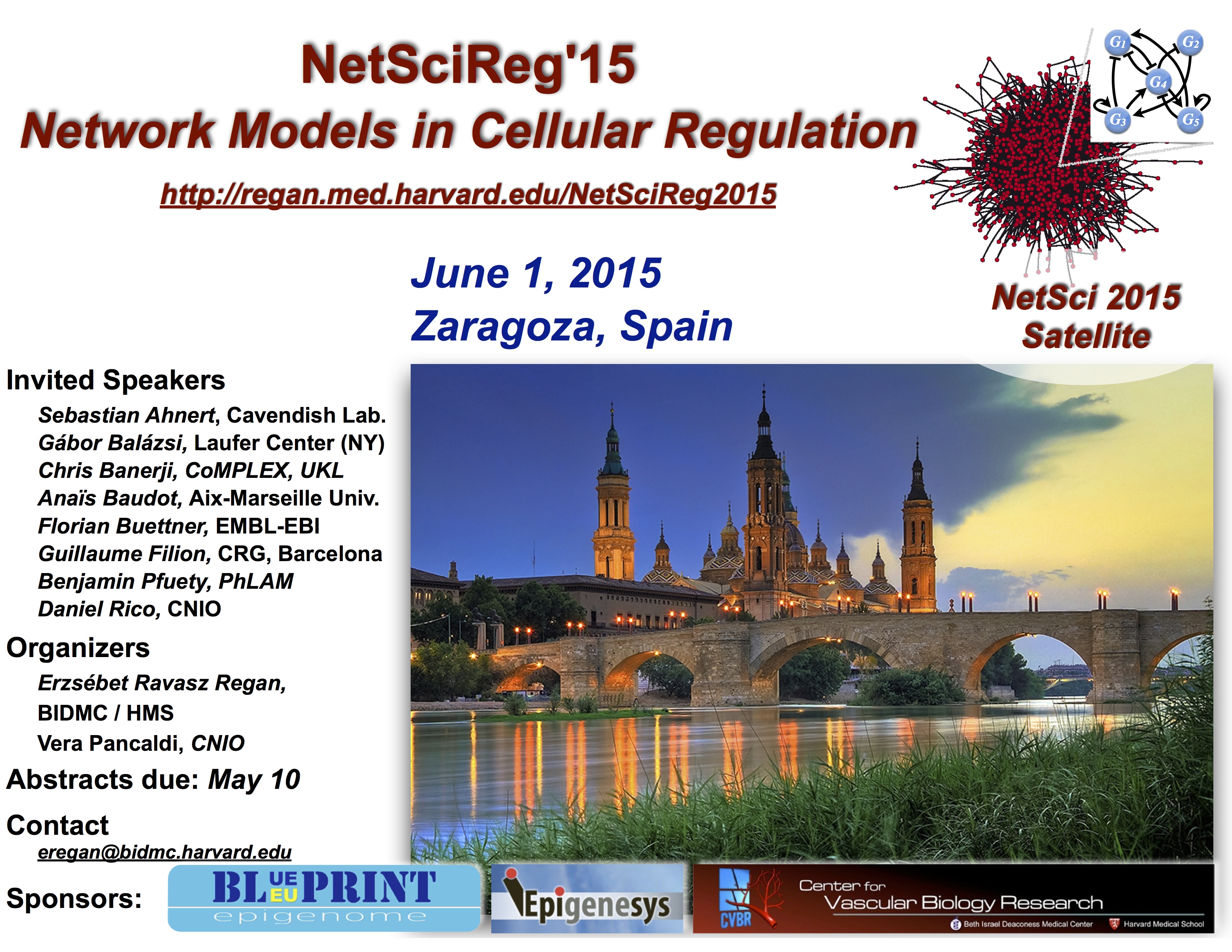NetSciReg'15 - Network Models in Cellular Regulation
June 1, 2015 - Zaragoza, Spain
| Synopsis |
| Program |
| NetSciReg'15 Flyer |
| Important Dates |
| Registration |
| Call for Contributed Talks |
| Logistics |
| NetSci 2015 |
| NetSciReg'14 |
| NetSciReg'13 |
| Sponsors |
|
Time: 4:40 - 5:20 PM
Type: Invited presentation
Affiliation: Spanish National Cancer Research Centre (CNIO), Madrid
Abstract Cell identity depends on complex communication networks based on chemical processes that modify the DNA, the histones and other chromatin proteins. It is now clear that the combination of different histone marks and cytosine modifications play an important role in defining epigenomic scaffolds affecting to the binding and function of other epigenetic players (eg. different protein complexes). However, we are yet far from understanding the epigenomic "language" and how the different chromatin components communicate with each other to perform biological functions. Here, we establish a global framework to rationalize and study epigenomic communication. This framework combines network-based analyses and evolutionary characterization of a communication network derived from high- throughput data and literature knowledge. We followed a systems biology approach to investigate the functional interdependence between chromatin components in mouse embryonic stem cells (ESCs). We constructed the epigenetic signaling network in ESCs as a combination of a high quality genomic co-localization network (extracted from 139 ChIP-seq experiments on 77 different epigenomic features) plus edge directionality based on the functional role of the proteins in this network. We defined histone marks and cytosine modifications as signals and classified those proteins co-localizing to them as their emitters or receivers based on the information derived from the literature regarding to the functional role of the proteins. The analysis of this network revealed that cytosine 5-hydroxy-methylation (5hmC) is a key signal for mediating communication among different regions of the network. A more detailed exploration of 5hmC-centered communication shows that it can co-localize independently with several different emitters. Our co- evolutionary analysis of this network points to 5hmC-mediated communication as the major source of co-dependent changes in this system, suggesting an important role of 5hmC-mediated communication in metazoan evolution. Altogether, we propose that 5hmC acts as a central switch between alternative mutually dependent chromatin configurations in ESCs. To our knowledge, this chromatin network is the most complete available global model of the epigenetic signaling and therefore we propose it as a valuable tool for understanding communication processes in ESCs. |
SPONSORS: |



